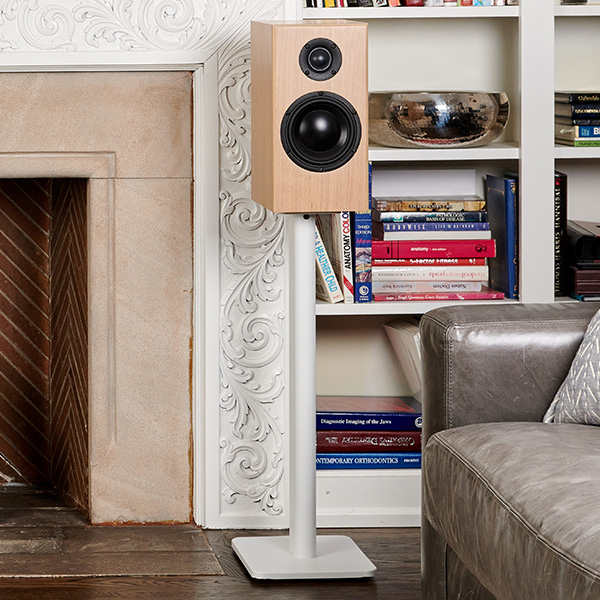When listening to music, the ultimate goal for many audiophiles is to feel as though the performers are right in front of them. This immersive, three-dimensional experience is known as a holographic soundstage. Achieving it involves a combination of high-quality equipment, precise setup, and an understanding of the acoustic properties of your listening space.
In this guide, we’ll explore what a holographic soundstage is, the factors that influence it, and actionable steps to create this mesmerizing effect using both traditional speakers and in-ceiling or in-wall options.
What Is a Holographic Soundstage?
A holographic soundstage creates the illusion of a live performance. It feels as though individual instruments and vocals are precisely located in a 3D space. The drums might sound like they’re slightly behind and to the left, the vocalist in the center, and the guitar to the right—all while providing depth that makes the music truly come alive.
This level of realism depends on the interaction between your speakers, your room’s acoustics, and your own auditory perception. It is influenced by factors like imaging, tonal balance, and how your speakers reproduce subtle details.
Key Factors for Creating a Holographic Soundstage
- Speaker Selection
High-quality speakers are essential. Totem Acoustic’s floorstanding, bookshelf, and Architectural speakers (such as in-ceiling and in-wall models) are engineered to deliver superior imaging, clarity, and tonal accuracy. Choosing the right type of speaker for your space is the foundation of building a holographic soundstage. We encourage you to visit your local audio dealer and listen to different speakers and let your ears be the judge of what sounds good to you. If the speakers are able to achieve a holographic soundstage in a store environment, you should be able to achieve the same at home.
- Speaker Placement
Speaker placement is critical for achieving a precise soundstage. Here are some guidelines:
- For traditional speakers, ensure they are equidistant from the listening position and angled slightly inward for proper stereo imaging. Angling the speakers is not necessary for most Totem Acoustic speakers since they offer wide dispersion characteristics.
- For in-ceiling and in-wall speakers, position them strategically to cover the listening area without overlapping sound waves excessively.
- Always start by following the recommendations in your speaker manual before proceeding to further refine the placement of your speakers.
- For more detailed information about this topic, please read our article titled How to Improve the Sound of Your Existing 2-Channel Audio System
- Room Acoustics
The interaction between your speakers and the acoustics of your room is one of the most critical factors in creating a holographic soundstage. A well-designed sound system can only perform to its full potential if the room’s acoustics are optimized. Here’s a deeper look into how to manage your room’s acoustic properties effectively:
- Understanding Room Dynamics
- Every room has unique acoustic characteristics shaped by its size, shape, and contents. These elements influence how sound waves reflect, absorb, and resonate. For example:
- Rectangular rooms tend to have predictable reflections and are easier to manage.
- Square rooms can amplify standing waves, causing uneven bass.
- Oddly shaped rooms often diffuse sound more naturally but may require additional fine-tuning.
- The challenge lies in controlling reflections and resonance to maintain a clean and immersive soundstage.
- Managing Reflections
- Reflections occur when sound waves bounce off hard surfaces like walls, floors, and ceilings, causing unwanted echoes and smearing the soundstage. To minimize these effects:
- Place acoustic panels on reflective surfaces, such as walls and ceilings. Panels absorb mid-to-high frequencies, reducing reverberations and clarifying imaging.
- Use diffusers to scatter sound waves instead of reflecting them directly. Diffusion helps maintain the room’s natural liveliness while preventing harsh echoes.
- For in-ceiling and in-wall speakers, strategic placement is critical to avoid exacerbating reflective hotspots.
- Flooring and Furnishings
- Flooring plays a significant role in room acoustics. Hard flooring materials like hardwood, tile, or laminate can cause excessive reflections, especially in the high frequencies. Consider the following:
- Add area rugs or carpets to absorb sound, particularly between the speakers and the listening position.
- Arrange upholstered furniture like sofas and chairs to absorb sound naturally and break up direct reflections.
- Bass Control
- Low frequencies, or bass, are especially tricky to manage as they tend to resonate and build up in corners or along walls. These resonances, known as standing waves, can muddy the soundstage and mask subtle details.
- Use bass traps in the corners of the room to absorb low-frequency energy and reduce boomy or uneven bass.
- Avoid placing speakers too close to walls or corners, as this can amplify bass unnecessarily. If space constraints necessitate wall-mounted or in-wall speakers, ensure they are properly calibrated to minimize bass resonance.
- Ceiling Considerations
- For in-ceiling speakers, ceiling height and material play a crucial role in sound dispersion and clarity:
- Lower ceilings may require angling the speakers directly toward the listening area to prevent reflections that distort imaging.
- High ceilings can create a more open soundstage but may introduce echo issues. Acoustic treatments, such as ceiling clouds, can mitigate this.
- Room Symmetry and Speaker Placement
- Room symmetry is essential for balanced soundstage imaging. Place your speakers equidistant from the side walls and at the same height to ensure even reflections. In rooms where symmetry isn’t possible, advanced calibration techniques can compensate for imbalances but may require the services of a custom installer.
- Dynamic Room Tuning
- As your listening habits and furniture arrangements evolve, the acoustic properties of your room may change. Periodically reassess your room’s sound profile by playing test tones and adjusting treatments or speaker placement as needed.
- By taking a comprehensive approach to room acoustics, you can significantly enhance your listening experience, ensuring every note, voice, and instrument feels lifelike and immersive.
- Listening Position
The sweet spot—the area where the soundstage is most vivid—is where the magic happens. Position your listening chair so that it forms an equilateral triangle with the speakers. For custom installation speakers, focus on symmetry in placement for optimal results.
- Electronics and Source Material
Your amplifier and source material also play a role. High-resolution audio formats like FLAC or DSD capture the subtle details that bring a holographic soundstage to life. Pair these with a high-quality amplifier to ensure your speakers perform at their peak.
- Speaker Calibration
Calibrating your speakers for phase and timing alignment is crucial. If your system supports it, use a room correction tool or manual calibration to fine-tune the sound. This is especially important for in-ceiling and in-wall setups to avoid phase cancellation, which can disrupt the soundstage.
Additional Tips for In-Ceiling and In-Wall Speakers
While in-ceiling and in-wall speakers are often thought of as practical solutions for space-saving, their potential for creating a holographic soundstage is immense when properly implemented. Here’s how to maximize their performance:
- Opt for speakers with pivoting drivers, such as Totem Acoustic’s offerings, to direct sound toward the listening area.
- Use multiple speakers for larger spaces to ensure uniform coverage and a consistent soundstage.
- Pair with a high-quality subwoofer to add depth and dimension.
Testing and Fine-Tuning
Once your system is set up, test it with music that features a wide dynamic range and intricate details, such as jazz or classical recordings. Use tracks with strong stereo imaging to evaluate how well the soundstage is performing.
Adjust speaker angles, distances, and room treatments incrementally to refine the experience. Trust your ears—your personal preferences play a significant role in achieving satisfaction with your soundstage.
Conclusion
Creating a holographic soundstage is a rewarding endeavor that transforms how you experience music. Whether you’re using traditional speakers or in-ceiling and in-wall models, the right equipment, thoughtful placement, and careful calibration can bring the magic of a live performance into your home.If you enjoyed this guide, we invite you to explore similar articles on the Totem Acoustic News + Reviews section for more expert tips and insights on achieving the ultimate sound experience.




